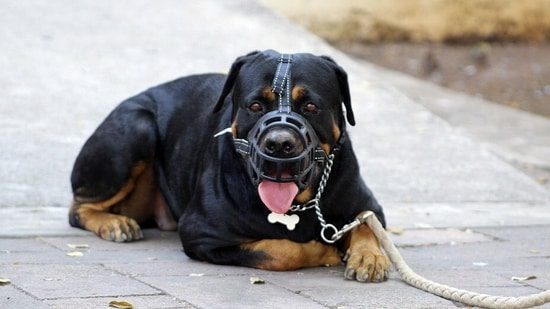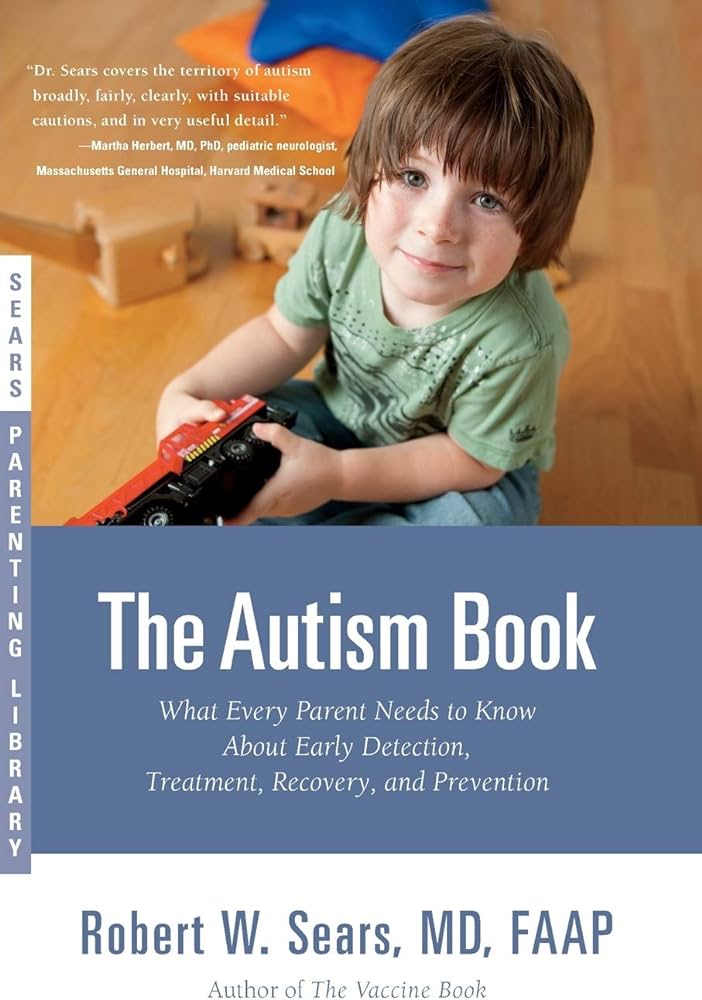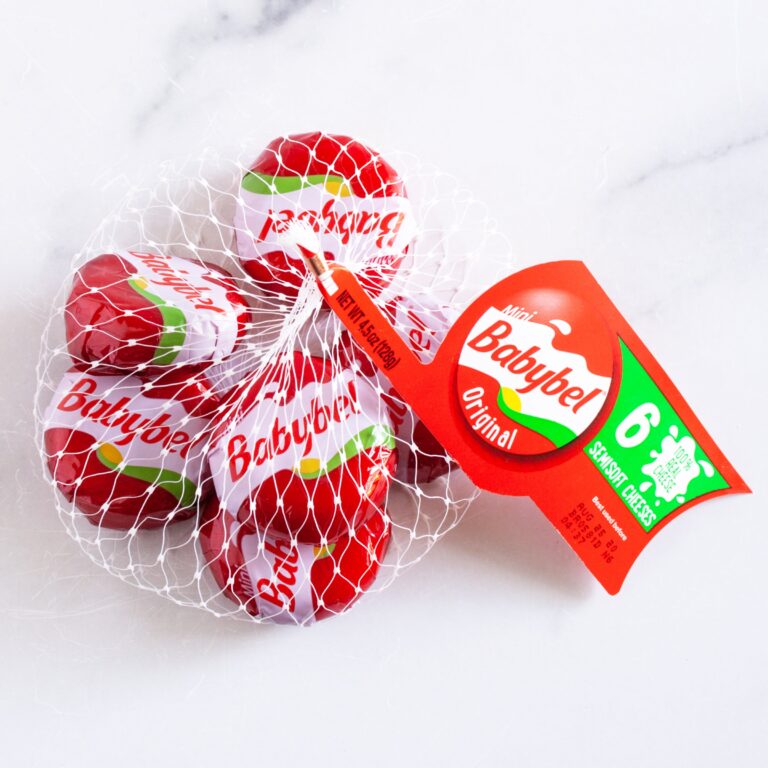How to Introduce a Hyper Dog to a Baby: Expert Tips and Tricks
To introduce a hyper dog to a baby, keep the first introduction short and have someone else hold the dog while the baby is held by someone familiar. (17 words) Introducing a hyper dog to a baby requires careful handling and gradual introductions to ensure the safety and well-being of both the dog and the baby.
It is important to establish boundaries and provide structure during these interactions while also giving attention to the dog and teaching the baby to respect the dog. By following these steps and taking the time to build a positive relationship, you can create a harmonious environment where the dog and baby can coexist peacefully.
We will explore the best practices for introducing a hyper dog to a baby, ensuring a smooth and safe transition for everyone involved.

Credit: www.amazon.com
Understanding The Needs Of A Hyper Dog
Introducing a hyper dog to a baby requires careful consideration and understanding of the dog’s needs. Hyperactive behavior in dogs can stem from various factors, and it is essential to address these factors to ensure a smooth introduction. By knowing your dog’s triggers and providing the necessary structure and guidance, you can create a safe and harmonious environment for both your hyper dog and your baby.
Hyperactive Behavior In Dogs
Dogs that exhibit hyperactive behavior tend to have excessive energy levels and are prone to restlessness and excitability. This behavior can manifest in various ways, including excessive barking, jumping, pacing, or difficulty in concentrating. Hyperactivity in dogs can be attributed to factors such as breed tendencies, lack of physical and mental stimulation, or behavioral issues.
Factors Contributing To Hyperactivity
Several factors can contribute to a dog’s hyperactivity. Some dogs may have a genetic predisposition to high energy levels, while others may become hyperactive due to a lack of exercise or mental stimulation. Additionally, certain breeds are naturally more energetic and require more physical and mental activities to stay calm and balanced. Behavioral issues, such as anxiety or fear, can also contribute to hyperactive behavior in dogs.
Knowing Your Dog’s Triggers
Understanding your dog’s triggers is crucial when introducing them to a baby. Every dog is unique, and what triggers hyperactivity in one dog may not affect another. Identifying these triggers, such as loud noises or sudden movements, allows you to take proactive measures to manage their behavior.
It is important to create a calming and structured environment for your hyper dog, especially during the introduction phase to the baby. By providing a predictable routine, ensuring regular exercise and mental stimulation, and using positive reinforcement training techniques, you can help your dog stay calm and focused.
Overall, introducing a hyper dog to a baby requires patience, understanding, and careful preparation. By addressing the hyperactivity factors, knowing your dog’s triggers, and providing a structured environment, you can create a positive and safe bond between your hyper dog and your baby.
Preparing Your Dog For The Arrival Of A Baby
Preparing your hyper dog for the arrival of a baby can be done by gradually introducing them, setting boundaries, and providing structure. Keep the dog on a leash when initially bringing them near the baby, and praise them for calm behavior.
With patience and positive reinforcement, your dog can adjust to the new addition to the family.
Establishing A Routine
Preparing your dog for the arrival of a baby starts with establishing a routine. Dogs thrive on consistency and structure, so it’s important to set a daily schedule that your dog can rely on. This will help your pup adjust better to the changes that come with a new baby.
Creating a routine involves setting specific times for meals, walks, playtime, and rest. Dogs are creatures of habit, so sticking to a consistent schedule will provide them with a sense of stability and reduce any anxiety they may feel.
Try to incorporate your dog’s routine into your daily life even before the baby arrives. This way, your dog will adapt to the changes gradually, making the transition smoother for everyone.
Basic Obedience Training
Basic obedience training is essential when preparing your hyper dog for a baby. Before the arrival of your little one, make sure your dog understands and follows commands such as sit, stay, down, and come. This will help you maintain control over your dog in various situations and ensure the safety of both your baby and your dog.
Positive reinforcement is the key to effective obedience training. Reward your dog with treats, praise, or playtime when they respond correctly to your commands. Consistency is crucial in training, so make sure to practice commands regularly and reinforce them consistently.
Providing Mental And Physical Stimulation
Another important aspect of preparing your hyper dog for a baby is providing them with proper mental and physical stimulation. Hyperactive dogs often have a surplus of energy that needs to be channeled appropriately.
To help your dog release their energy in a productive way, engage them in activities that stimulate their mind and body. This can include daily walks, interactive play sessions, puzzle toys, or obedience training exercises.
Additionally, ensure that your dog gets plenty of exercise to tire them out. A tired dog is less likely to engage in destructive or hyperactive behavior. By meeting their physical and mental stimulation needs, you can help your dog maintain a calmer and more balanced state of mind when your baby arrives.
Introducing Your Dog To The Baby
Bringing a new baby home is an exciting time, but it can also be a stressful one for your hyper dog. Introducing your dog to the new addition to your family requires careful planning and preparation. By following these tips, you can ensure a smooth transition and create a positive and safe environment for both your dog and your baby.
Supervised Controlled Interactions
When introducing your hyper dog to your baby, it’s essential to have supervised controlled interactions. This means always being present and in control of the situation. Keep your dog on a leash during the initial introductions, allowing them to approach the baby calmly and at a safe distance. If your dog becomes overly excited, anxious, or displays any signs of aggression, calmly redirect their attention and provide a distraction, such as a chew toy or a treat. By maintaining control and supervision, you can ensure the safety of your baby and create a positive experience for your dog.
Gradual Introductions
A key aspect of introducing your hyper dog to your baby is to take it slow and gradual. Start by allowing your dog to smell the baby’s items, such as blankets or clothing, so they can become familiar with the baby’s scent. Slowly introduce your dog to the baby by keeping them at a safe distance. Over time, you can gradually decrease the distance and increase the amount of time they spend together. Remember, every dog is different, so take cues from your dog’s behavior and adjust the pace accordingly. Patience and consistency are key during this process.
Positive Reinforcement And Rewards
Positive reinforcement is crucial when introducing your hyper dog to your baby. Reward your dog for calm and appropriate behavior around the baby with treats, praise, or a favorite toy. Create positive associations by ensuring that your dog always associates the baby with pleasant experiences. For example, you can give treats or praise when your dog behaves calmly and politely around the baby. This will help your dog understand that good behavior around the baby is rewarded, leading to a harmonious relationship between your dog and your baby.
In conclusion, introducing your hyper dog to your baby requires supervised controlled interactions, gradual introductions, and positive reinforcement. By following these guidelines, you can create a safe and peaceful environment for both your dog and your baby. Remember, patience, consistency, and positive reinforcement are key to a successful introduction and a loving bond between your dog and your baby.
Maintaining A Safe Environment
Introducing a hyper dog to a baby requires careful steps to maintain a safe environment. Gradually introduce the dog to the baby, set boundaries, and provide plenty of positive reinforcement to ensure a successful and harmonious relationship.
Establishing Boundaries
When introducing a hyper dog to a baby, it is crucial to establish boundaries to maintain a safe environment for both the dog and the baby. Clearly defining boundaries will help the dog understand what behaviors are acceptable around the baby.
- Give your dog a designated space: Set up a comfortable and safe area for your dog, such as a crate or a dog bed in a separate room. This will allow the dog to have their own space while adjusting to the presence of the baby.
- Teach the “leave it” command: Train your dog to respond to the “leave it” command, which will help prevent them from approaching or getting too close to the baby’s belongings.
- Establish a no-go zone: Create a designated area in your home where the dog is not allowed to enter, such as the baby’s nursery. Use baby gates or closed doors to enforce this boundary.
Supervision And Separation When Necessary
Safety should always be a top priority when introducing a hyper dog to a baby. While it is important to allow interactions between the dog and the baby, supervision and separation are necessary in certain situations.
- Never leave the dog and the baby unattended: It is crucial to constantly supervise their interactions to ensure the safety of both. Always be present and alert when the dog and the baby are in the same room.
- Use a baby playpen: Setting up a baby playpen for your little one will provide a safe and enclosed space where the baby can play freely without the risk of the dog accidentally knocking them over.
- Separate the dog if necessary: If the dog becomes overly excited or starts displaying aggressive behavior, it is important to separate them from the baby. Quickly and calmly remove the dog from the room, and give them time to calm down before reintroducing them to the baby.
Baby-proofing For The Dog’s Safety
While our main focus is usually on the safety of the baby, it is equally important to ensure the environment is safe for the dog when introducing them to the baby. Baby-proofing the house will minimize potential hazards that could negatively impact the dog’s well-being.
- Secure dangling cords: Keep blinds cords and other dangling cords out of the dog’s reach to prevent entanglement or choking hazards.
- Store chemicals and medications safely: Keep cleaning products, medications, and other potentially toxic substances out of the dog’s reach. Use child safety locks on cabinets if necessary.
- Provide dog-friendly toys and activities: Ensure the dog has access to their own toys, chew bones, and mental stimulation to prevent them from becoming bored or frustrated.
Ensuring A Harmonious Relationship
Introducing a hyper dog to a baby requires patience and careful planning. Gradual introductions, setting boundaries, and providing structure can help foster a harmonious relationship between the two.
Promoting Positive Associations
Introducing a hyper dog to a baby can be a daunting task, but with the right approach, you can ensure a harmonious relationship between them. One of the key factors in this process is to promote positive associations between the dog and the baby. Dogs are highly sensitive to the emotions and energy of those around them, so it’s important to create a peaceful and calm environment during their initial interactions. One way to promote positive associations is to give the dog treats or rewards whenever it is near the baby. This will help the dog associate the presence of the baby with something pleasant and enjoyable. Additionally, you can engage in play sessions with the dog while the baby is nearby, making sure to give the dog plenty of attention and praise for its gentle behavior.Encouraging Gentle Behavior
It’s crucial to encourage gentle behavior in your hyper dog when introducing it to a baby. This will not only ensure the safety of the baby but also help the dog understand appropriate conduct around the little one. To achieve this, it’s important to establish clear boundaries and rules for the dog. Start by teaching the dog basic obedience commands such as “sit,” “stay,” and “leave it.” These commands will help you maintain control and redirect the dog’s attention if it becomes overly excited or anxious around the baby. Practice these commands in various scenarios, gradually increasing the distractions to mimic real-life situations. Another way to encourage gentle behavior is to monitor the dog’s body language closely. Look for signs of stress or discomfort, such as rigid posture, panting, or excessive licking. If you notice these signs, remove the dog from the situation and give it some space to calm down. Never force the dog to interact with the baby if it is displaying signs of fear or aggression.Building Trust And Bonding Between Dog And Baby
Building trust and bonding between your hyper dog and the baby is crucial for a harmonious relationship. This process requires patience, consistency, and positive reinforcement. One effective way to build trust is by involving the dog in the daily routines and care of the baby. Allow the dog to observe and be present during activities such as feeding, diaper changes, and playtime with the baby. This will help the dog understand that the baby is a part of the family and not a threat. Gradually involve the dog in more interactive activities, such as supervised play sessions or walks with the baby in a stroller, always prioritizing the safety and well-being of both the dog and the baby. Remember to always supervise their interactions and provide a safe environment for both the dog and the baby. It’s important to create a positive association and foster a sense of companionship between them. With time and consistent positive reinforcement, you can help your hyper dog and baby develop a strong bond based on trust and understanding.Frequently Asked Questions On How To Introduce A Hyper Dog To A Baby
How Do You Introduce An Energetic Dog To A Baby?
To introduce an energetic dog to a baby, follow these steps: 1. Build new routines and set boundaries. 2. Let the dog explore its surroundings gradually. 3. Give your dog attention and teach your baby to respect the dog. 4.
Provide opportunities for bonding when age-appropriate. 5. Keep initial introductions short and have someone else hold the dog while mom holds the baby.
How Do You Prepare A Hyper Dog For A Baby?
To prepare a hyper dog for a baby, keep the dog on a leash during introductions. Don’t force the dog to approach the baby, but praise and encourage calm behavior. If the dog gets too excited, take a step back and restart.
Gradually introduce the dog to the baby and teach them to respect each other.
What If My Dog Is Overly Excited With My Baby?
If your dog is overly excited with your baby, avoid forcing them to interact. Instead, give your dog a chewy on the floor and praise them for lying down calmly. This will help build their comfort level and reinforce calm behavior.
How Do You Introduce A Hyper Dog To A Child?
To introduce a hyper dog to a child, keep your distance at first and gradually approach. Use praise and treats to make it a positive experience. If the dog seems uncomfortable, take a step back and try again later. Keep the initial interactions short and have someone else hold the dog’s leash.
Conclusion
Introducing a hyper dog to a baby can be a challenging and nerve-wracking process. However, with patience, consistency, and the right techniques, it is possible to create a harmonious environment for both your furry friend and your little one. Remember to gradually introduce them, set clear boundaries, and provide plenty of supervision and positive reinforcement.
By following these steps, you can ensure a safe and peaceful coexistence between your hyper dog and your baby. Happy parenting!








